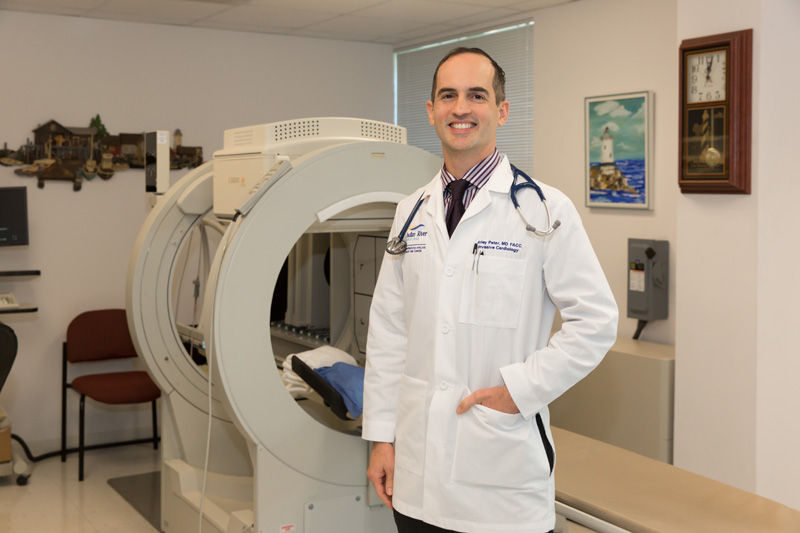A new study from the University of Royal Holloway in London finds that more than a third of stroke patients with no medical history of heart problems actually have significant tightening of the arteries around the heart, putting them at risk for a future heart attack.
These results underscore the fact that heart disease can be “silent” – it can exist without any symptoms. As a result, it can go undiagnosed and untreated, increasing the risk of a future heart attack. The researchers recommend that following a stroke, all patients should be assessed by a cardiologist and screened for silent heart disease.
Vero Beach cardiologist Dr. Arley Peter says he strongly agrees with this recommendation: “The risk factors for both conditions are similar. If a person has a stroke, they often have exposure to a set of risks that can cause heart disease.”
Coronary stenosis occurs when a coronary artery (a blood vessel in the heart that carries blood to heart tissue) becomes tapered due to a build-up of materials like fat or cholesterol. If the artery becomes too constricted, it can severely affect the heart’s functioning and may lead to a heart attack.
The likeliness of coronary stenosis increases with age; it can also be hereditary. It is more common in males than females, but can occur in anyone. Smoking is a risk factor for coronary stenosis, as the nicotine in cigarettes can make blood vessels become tapered and more susceptible to becoming blocked. Other risk factors are a sedentary lifestyle, being overweight and having a diet high in saturated fats.
Vero’s Dr. Peter says, “Some risk factors are not modifiable, like aging and family history. But some can be modified by controlling blood pressure and cholesterol, and by not smoking.” Dr. Peter is also a big proponent of exercise, saying that keeping the body moving is good for the cardiovascular system and also an effective stress-reliever.
In the study, which was published in the medical journal BMJ Open, records of more than 50,000 stroke patients were reviewed, making it the largest study of its kind ever conducted. The researchers looked for signs of “coronary stenosis” of 50 percent or more, meaning that plaque build-up was constricting the inner diameter of the artery by half, restricting the flow of blood and oxygen to the heart. They found it in more than a third of the cases, and in 3 percent of the cases the patient experienced a heart attack within a year of their stroke. While it may sound low, that percentage is higher than previously thought.
Mild instances of coronary stenosis may not have any symptoms (the “silent” heart disease discussed in the study). If the condition worsens and the artery becomes constricted, there can be a tight feeling in the chest as the artery fights against the clogged materials to pass blood to the heart. Difficulty in breathing can also occur, especially after physical activity, because the heart isn’t receiving as much oxygen as it normally would or providing as much oxygenated blood to the rest of the body.
Medications are often prescribed to treat coronary stenosis or prevent it from worsening – including blood thinners that allow blood to flow more freely through a constricted coronary artery, cholesterol-lowering medication (statins), and medication to lower blood pressure. Dr. Peter is also an advocate of aspirin therapy, as a way to reduce the risk of heart disease, and to help prevent a second heart attack should one occur.
Coronary stenosis can also be treated with surgery. One of the most common procedures is angioplasty – a surgeon inserts a collapsed “balloon” into the clogged area and then uses an instrument to fill the balloon with air. This forces the built-up fat or cholesterol closer to the walls of the artery, freeing up space for blood to pump through to the heart. In more serious cases, as when more than one artery is clogged, bypass surgery may be needed. A surgeon cuts a piece of a vein from another body part and attaches it to the blocked area to redirect blood around the narrowed coronary arteries.
Dr. Peter holds four board certifications in the areas of Cardiovascular Disease, Adult Comprehensive Echocardiography, Nuclear Cardiology and Internal Medicine. His office is located at 787 37th Street, Suite E140 in Vero Beach; the office phone is 772-778-8687.

